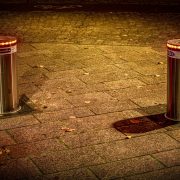If you own a swimming pool, you know that it can provide hours of enjoyment for you, your family, and your friends. However, owning a pool also comes with a lot of responsibility. One of the most important things you need to do as a pool owner is to ensure that it is safe for everyone who uses it. This means that you need to prepare for a swimming pool safety inspection and for that, you need to hire a professional and reputable company like One Stop Inspections to conduct a thorough inspection. However, In this article, we will discuss the steps you can take to prepare for a swimming pool safety inspection.
Understanding Swimming Pool Safety Inspections
Swimming pool safety inspections are conducted to make sure that your swimming pool meets certain safety standards. These inspections are usually conducted by a pool safety inspector who will inspect your pool and provide you with a report outlining any safety issues that need to be addressed. Some of the areas that a pool safety inspector will assess include the pool fence and gate, the surrounding area, the pool shell, and pool equipment. The inspector will ensure that the pool fence is at the required height and that the gate is self-closing and latching. They will also check that there are no climbable objects or areas in close proximity to the fence. The surrounding area will be assessed to ensure that there are no hazards, such as sharp objects or slippery surfaces. The pool shell will be examined to check for cracks or leaks, whilst the pool equipment will be assessed to make sure it is functioning correctly and safely. It is important to have regular pool safety inspections to ensure the safety of your family and visitors, as well as comply with local regulations.
Preparing for a Swimming Pool Safety Inspection
Here are some steps you can take to prepare for a swimming pool safety inspection:
- Ensure that the pool area is properly fenced with a self-closing gate that opens away from the pool.
- Keep the pool area clear of any trip hazards or debris.
- Make sure all pool equipment, such as filters and pumps, are in good working order.
- Install proper safety equipment, such as a pool alarm or safety cover.
- Have all necessary safety signage in place, including depth markers and “no diving” signs.
- Ensure that all pool chemicals are stored in a safe and secure location, away from children and pets.
- Keep a first aid kit and rescue equipment, such as a life hook or float, near the pool area.
- Conduct regular pool maintenance and cleaning to keep the pool in good condition.
- Keep a log of all pool maintenance and repairs for inspection purposes.
- Hire a certified pool safety inspector to conduct a thorough inspection of the pool area and make any necessary recommendations for improvement.
Conclusion
Owning a swimming pool comes with a lot of responsibility, and ensuring that it is safe for everyone who uses it is one of the most important things you need to do as a pool owner. By following the steps outlined in this article, you can prepare for a swimming pool safety inspection and ensure that your pool meets all of the necessary safety standards. Remember, the safety of your pool is in your hands, so take the necessary steps to keep it safe and enjoyable for everyone.




















